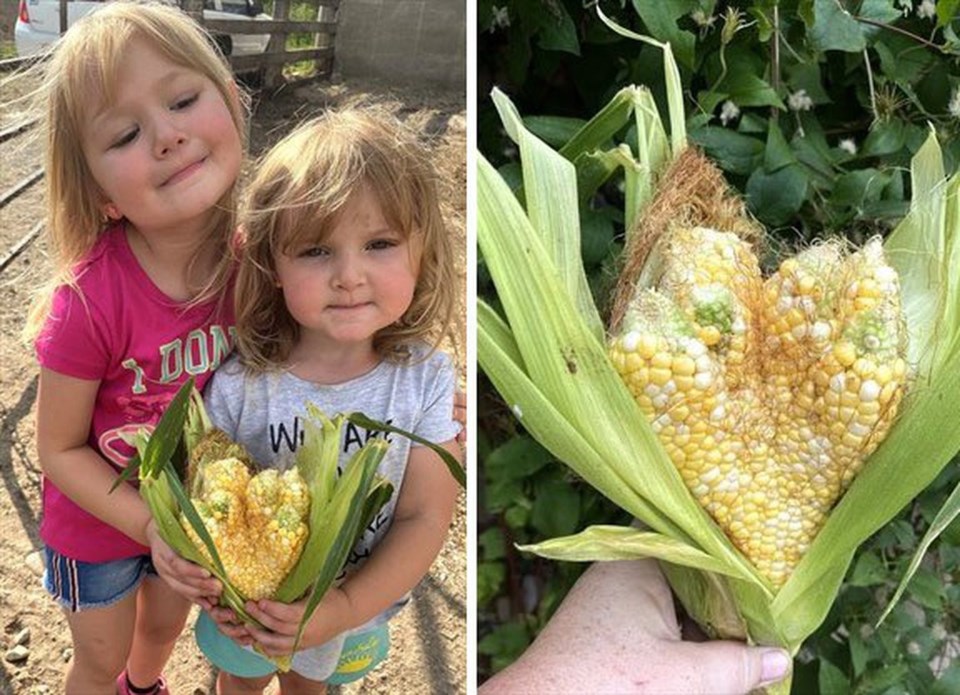Leeane Ament and her granddaughters were out picking sweet corn in their field for dinner, when they came across this large ear of corn. When they opened the husk, they found six ends with the ear completely intact.
JUST THE FACTS
• Ament, who lives just south of Orangeville on Willoughby Road in Caledon with her family, said her 85-year-old father who has farmed all his life has never seen anything like it.
• “We opened it and realized that it had split three times, so there were six ends,” said Ament. “It was one cob on a regular stalk of sweet corn that had been planted.”
• It can be fairly common to get two ears or a single ear split two ways in a cob, but it’s not often that people see more. After inspecting the rest of the field, it was clear there were no other cobs like it.
• “The kernels on it were perfect,” added Ament. “My dad sent a picture to one of his agricultural dealers, and they sent a message back asking what we were growing here. We went down the rest of the row to see if there were any more or anything, but it was just a one-off, a complete oddity.”
• Her granddaughters are the fourth-generation of the family on the farm. “It was really neat that they were here to find it. It was really exciting for them, but I don’t know, I think the adults were more excited.”
• This phenomenon it turns out, has happened before, though not often. It is called a Bear Claw or Bear Paw deformity, which refers to the fact that the split makes it look similar to a paw.
• According to the Ohio State University (OSU), it is believed the deformity is caused by a ‘chilling injury’, which is when there are very cold temperatures during the formation of the ear. Those low temperatures create a disruption in the kernel development.
• Despite it happening enough to have a name, the OSU indicates that it is still an extremely rare occurrence.
• Whether or not the temperature was the culprit behind this particular deformity, Ament said the crops have thrived this season.
• “It’s been a really great year for corn, just because of the weather patterns that have happened,” she said. “We have a picture of a 13 foot stalk beside my son that makes him look small. I’ve certainly never seen anything like it.”



